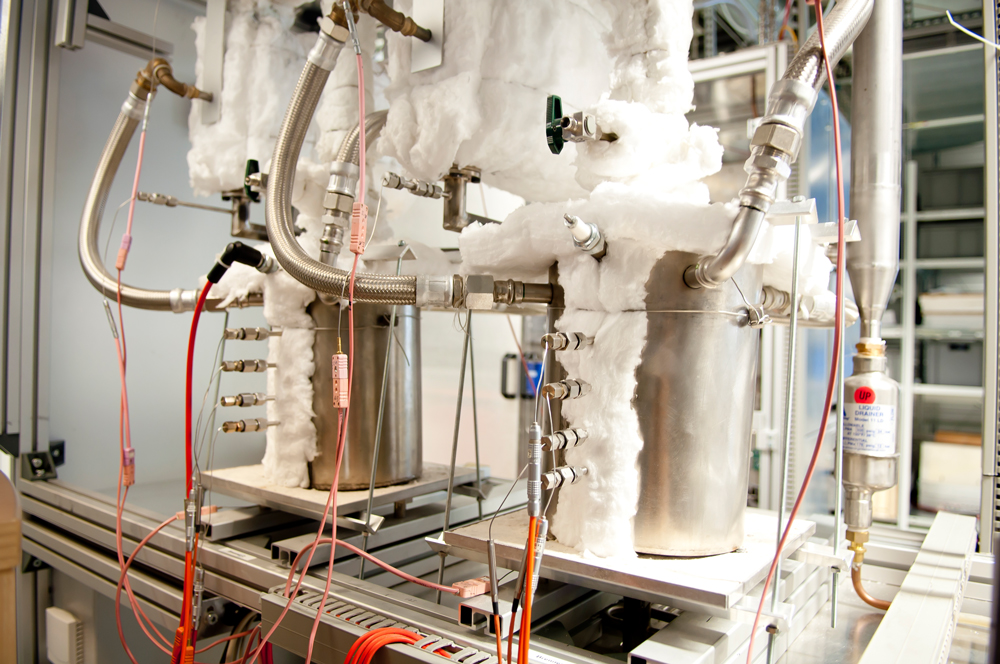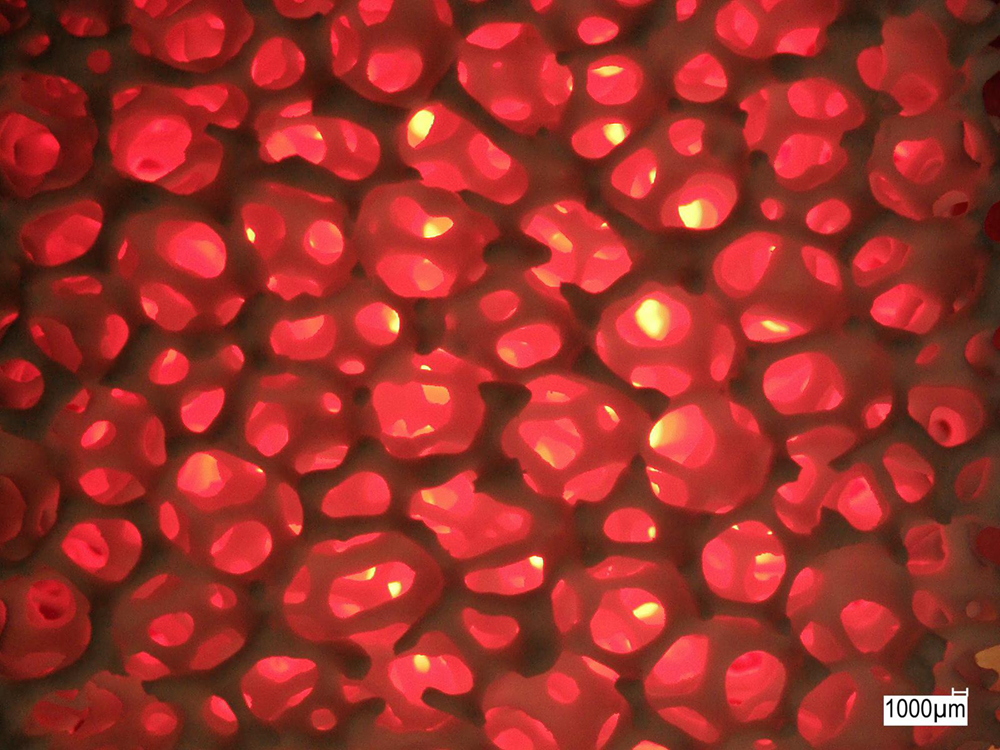Cellular ceramics are ideal structures for the stabilization of chemical reactions, in particular for combustions and reformation reactions, and additionally for better heat dissipation (IR-heaters).
The so-called porous burners are using a new combustion concept, where the flame is stabilized in a porous structure and does not burn freely in space. Due to the high dwell time of the gas in the porous structure, the combustion can be significantly intensified showing low pollutant emission, large modulation width and high efficiency. Furthermore, the glowing ceramic burner generates a comparably intensive and homogenous thermal radiation (infrared burner) whose wavelength can be precisely adapted to drying processes, e.g. paper industry. The core of this burner – cellular ceramics – has to meet many requirements in terms of high-temperature and thermoshock resistance as well as long lifetime.
Due totheir high thermal and chemical resistance, open cellular ceramic foams made of silicon carbide are perfectly suited for burner and reformer applications. Here, various material adaptions can be used depending on the burning conditions. LigaFill® ceramic foams are specific developments of Fraunhofer IKTS. They show high strength in a temperature range up to 1300 °C. In contrast, SSiC foams tolerate thermal peaks up to 1550°C during changes of the operating points or load shedding. They are particularly suited to meet the high requirements of industrial burners or afterburners in solid-oxide fuel cells.
For further material developments, custom-made burner rigs were installed to examine the foam burners under application-oriented conditions, i.e. endurance tests.
In order to extend the functionality of ceramic foams, they are, additionally, equipped with high-temperature-resistant catalyst coatings. Hence, porous burners can also operate with lean gases or the ignition or reaction can be switched to lower temperatures. Therefore, the efficiency of burner systems is further increased.
Services offered
- Development of cellular ceramics for porous burners, IR heaters and reformers of chemical engineering
- Manufacturing of samples, prototype components and small series
- Materials selection and component design for porous burners
- Endurance tests to determine the long-term temperature behavior
- Analysis and evaluation of tested burner components
Technical equipment
- High-performance machine technology for the development and manufacturing of ceramic foams and heater plates in pilot-plant scale
- Analysis equipment for foam characterization in terms of cell width, permeability, specific surface
- Analysis equipment to characterize degradation of ceramic components subject to thermal stress (changes in microstructure, reaction layers, residual strength)
Examples and references
- SiSiC and SSiC ceramic foams for different gas/oil pore burners
- Afterburners and reformers for SOFC
- Development of atmospheric solar receivers
- Cellular IR heater plates for dryers
- Cellular ceramics with catalytic coatings for lean gas reformation

